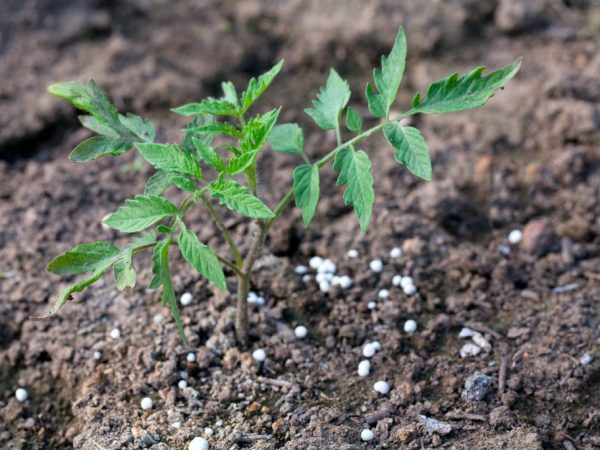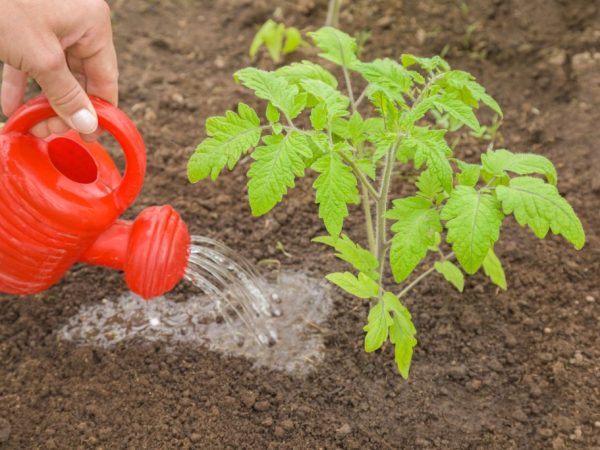Rules for feeding tomatoes with urea
Many gardeners simply have no idea what mineral fertilizer is for tomatoes. Some specialists do not risk using it for their crops, and some use it to quickly revive crops. Most mineral fertilizers are sold on the market, but not all gardeners are ready to use them. But feeding a tomato with urea is a fairly common phenomenon of our time.

Rules for feeding tomatoes with urea
How urea works
Urea or carbonite is a special fertilizer substance that comes in the form of ordinary granules. It contains a substance such as nitrogen. It is nitrogen that is the most basic element for maintaining plants in normal form.
Of all the substances in existence, urea has the highest nitrogen level. After urea enters the soil, it begins to interact with soil bacteria. As a result of this synthesis, ammonium is created from carbon dioxide. After the ammonium is in the open air, it is converted to ammonia. For this reason, urea fertilization should be internal, and in large quantities. If a small or external feeding is done, then this will not give any result. You will only waste your money, time and effort. It is necessary to thoroughly water the tomatoes.
It is believed that the decision to water or feed the tomatoes with urea in the greenhouse is a very bad idea. Many experts do not recommend such actions. But if you dilute the solution correctly, and according to all the rules, feed it, you can get pretty positive results.
How is feeding carried out correctly?
The use of urea is quite common. Despite the fact that many do not trust her, she is still used in industry. It was decided to feed the crops with small amounts of urea. The main rate of application of the substance in the soil is about 20 grams per 1m2. Water the tomatoes in such a way that the recommended rate is distributed over a 10-liter bucket of water. Spraying means that no more than 30 grams of nitrogen element should go to 10 liters of water. Fertilize seedlings as follows: prepare the correct solution. It should consist of 20 grams of fertilizer per 5 liters of water. After that, 1 liter of the substance should be watered each bush.
If you are worried about not spoiling the soil, you can use lime.
- The use of lime will remove the negative effects of nitrogen.
- It perfectly neutralizes the negative effects of urea on the soil. As a result, you will not only get a great harvest, but also save the soil for the next tomato planting.
- It is believed that for every 2 kg of urea, about 1 kg of lime should be used.
- A third of this mixture should be introduced at the time the soil is being prepared.
- The last part can be left for the moment when the fertilizing of already planted tomatoes will be carried out.

It is important to properly prepare the fertilizer mixture.
You can create a liquid solution. It consists in the fact that you need to mix 50 grams of urea, and about 9 liters of water. This solution will be enough to feed about 20 m2 of the vegetable garden. They can also be sprayed. It is important to remember that the more you use mixtures per m2, the worse you do for the plant. It is very important to observe all proportions so as not to harm yourself and the tomatoes. If you decide to feed already grown plants, then this amount of substance is enough for fifty tomato bushes.
In order to feed the roots, a new mixture should be prepared. Foliar feeding of tomatoes is carried out as follows: mix about 200 g of urea in 10 liters of water. This amount of solution is enough to fertilize the entire city, 100m2. If you do not sell products and grow tomatoes for yourself, then you can reduce the amount of fertilizer in half, and develop it in the same amount of water.
It is these mineral fertilizers that are best used for foliar treatments. This is justified by the fact that urea is not capable of burning the foliage or spoiling the trunk of a tomato, which cannot be said about saltpeter, with which it is very easy to overdo it and completely lose the crop.
General recommendations
Many people are thinking about how to feed tomato seedlings with urea. For seedlings, this substance is quite important. It is able to enhance growth and bear fruit. This goal will be achieved only at the moment when you water the planted seedlings correctly. The bottom line is that you shouldn't start watering immediately after fertilizing. Watering should be put on after several hours, because only in this way the seedlings will be able to absorb all the necessary elements. And watering will simply wash away fertilizer residues into the soil.
It is important to remember that this fertilizer is not intended to fertilize the soil in large quantities. If you neglect this advice, then you can cause irreparable harm to the plant. Do not use it before planting and add it to the holes. In addition, the substance is not suitable for frequent use. Tomatoes are not very fond of when urea is supplied to them in large quantities.
If such a desire arises, then you can simply dilute the urea solution. The correct dosage is 1 tablespoon of fertilizer in a large bucket of water. It is best if the bucket is 10 liters. This solution should be sprayed on foliage. Foliar feeding of tomatoes and plants with urea is carried out with the same solution. Foliar dressing should be carried out in the early days of July.
Conclusion
Urea is not considered a universal fertilizer. It can both fertilize the soil and spray a large number of seedlings. It does not need to be used every time the tomato demands it.
Experts recommend fertilizing or feeding the soil with it only at certain points in time. They are convinced that during the flowering of the inflorescence or the creation of the ovary, it is not acceptable. This is justified by the fact that it contains, albeit not a large amount, but nitrogen, therefore this nutrient can negatively affect the occurrence of the ovary and will constantly delay it. If you use nitrogen substances literally several times over the entire duration of the season, then tomatoes will only thank you with their high yield.


